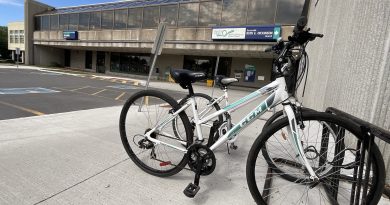FCRC Report Examined 84 Fatal Collisions In Ottawa
By Barrhaven West Councillor David Hill
I was very interested to read Ottawa’s Fatal Collision Review Committee’s (FCRC) 2020 Annual Report, marking the first one since the committee was formed in 2017. The report examined 84 fatal collisions between 2017 and 2020 on Ottawa’s roads, not including the 416 and Queensway highway.
To begin 52% of the fatal collisions involved only motor vehicle occupants, with the remaining 48% affecting vulnerable road users. Within the latter, 26% of the collisions involved pedestrians and 13% involved motorcyclists, 5% involved cyclists, and 4% involved e-bike riders. 24% of all fatal collisions took place in the outer urban suburbs (including Barrhaven).
The top three months with the highest recorded number of fatal collisions include July and September (both 14%) and June following at 10%.
What were the factors involved in the fatal collisions?
Age
Looking into the deaths involving motor vehicle operators, there is an over-representation in the 16–24 year age range and the 55+ year age range. Additionally, the 55+ age ranges makes up approximately 50% of all road user deaths.
Speed
Of the drivers involved in collisions reviewed by the report, 45% were engaged in speeding. Of the 49 speeding drivers, 31 were travelling at 20 km/h or more over the speed limit with five of the drivers travelling at 80 km/h or more over the speed limit. The highest driver speed was 135 km/h over the speed limit of the roadway. I am speaking with likeminded councillors on deterring and curbing this – through automated enforcement, and potentially legislative modernizations.
Prior Convictions
Among drivers involved in fatal collisions for whom records were available, the average number of previous convictions was 5.3 and 19% of drivers had 10 or more previous convictions. This implies to me that subsequent infractions need to be stricter.
Alcohol and/or drug use
A third of the fatal collisions reviewed had one or more road users impaired by drugs or alcohol and often were impaired by multiples substances. Cannabis was considered a factor in 19% of fatal collisions, cocaine in 20% and alcohol in 19% of cases.
Recommendations
One of the main recommendations to the City is to develop a comprehensive strategy to reduce speeds on Ottawa roads, including promotion of automated speed enforcement. This technology is a more effective and cost-efficient tool to support traditional enforcement strategies for which I will be expanding the community safety zones and enforcement in the coming years.
So where does this leave Barrhaven?
As part of the City’s automated speed enforcement campaign, Barrhaven-West will be receiving three automated speed enforcement cameras in school zones in 2023. The locations include St. Cecilia Elementary School, St. Joseph’s High School, and Cedarview Middle School. The aim of these installments is to reduce speeding and do so in strategic locations where there is a high volume of road users (students, cars, and buses).
The full report can be found here: https://bit.ly/44HfL3y And if you are interested in regular updates on this subject, send me an email at david.hill@ottawa.ca to join our newsletter list or to set up an in-person appointment.






